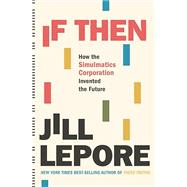If Then How the Simulmatics Corporation Invented the Future

If Then How the Simulmatics Corporation Invented the Future
- ISBN 13:
9781631496103
- ISBN 10:
1631496107
- Format: Hardcover
- Copyright: 09/15/2020
- Publisher: NORTON
Rent
From $10.63
Used From $3.43
List Price $30.88 Save
| TERM | PRICE | DUE |
|---|---|---|
Added Benefits of Renting



List Price $30.88 Save $27.45
Used
$3.43
In Stock Usually Ships in 24 Hours.
We Buy This Book Back!
Included with your book
Free Shipping On Every Order



